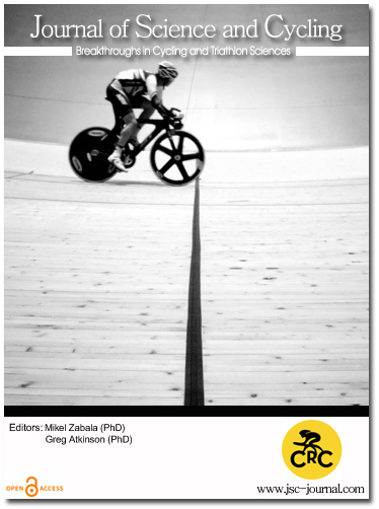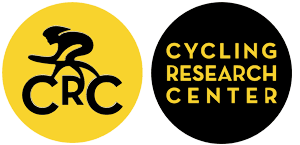Preliminary study: the effect of biomechanical foot orthotics in bilateral pedalling asymmetry in three cyclists affected by an anatomic asymmetry
Keywords:
short leg, foot orthotics, bilateral pedalling asymmetry, maximal crank torqueAbstract
Background: The optimization of the cyclist's position aims to increase performance and may prevent injuries. To find the optimum posture, taking into account anthropometry of the cyclist is essential [1] because an anatomic asymmetry (short leg) could alter the cyclist's balance causing a decrease of power output for one of the two lower limbs. Bilateral pedalling asymmetry may amplify the risk of premature fatigue and injuries [2]. Biomechanical foot orthotics (FO) are used to reduce injuries [3] and to increase performance [4] improving left/right balance between the two legs. The aim of this study was to analyse the effect of the installation of a new FO (just after the laying) on a bilateral pedalling asymmetry in cyclist affected by an anatomic asymmetry (short leg).
Methods: Three high-level cyclists with an anatomic asymmetry were recruited. The differences between the two legs were spotted with a questionnaire that focuses on leg balance and pains during practice. A podiatrist estimated the level of asymmetry and created individualised FO to reduce the biomechanical balance.
The subjects performed a test without and with a FO (T1 and T2 randomly) on a track bicycle (fixed-gear bicycle which reduces the impact of the leg during the upstroke). The bike was positioned on a home-trainer CYCLUS (RBM elektronik-automation GmbH, Leipzig, Germany) allowing for control to the break resistance. The crank torque was measured with a SRM crank dynamometer (Ptnews Torque Analysis Software, SRM Science, Welldorf, Germany).
Each test was performed at three levels of maximal aerobic power: 1 min at 60% (I1), 1 min at 75% (I2) and 1 min at 90% (I3). The recovery was 3 min between the different bouts of exercise and 30 min between the tests. Asymmetry Index (AI, %) [2] was used to quantify the bilateral pedalling asymmetry between the dominant (DO, N.m) and the non-dominant (ND, N.m) lower limb following: (DO, the lower limb which produced the higher crank torque and ND the inverse). The crank peak torque was the maximal value measured for each leg between 0 and 180° for the left and right crank cycle. It was extracted from the average torque measured over one minute. After the two tests (without and with FO), the three subjects answered a subjective scale about pedalling comfort (0/10 = discomfort and pain; 10/10 = optimal comfort).
Results: The results show (Table 1) that AI is similar for the two experimental conditions without (6.6%) and with FO (6.7%). However, the subjective scale shows that the cyclists feel better (+ 39%) in terms of comfort when pedalling with a FO.
Discussion: This study showed that FO had no direct impact on bilateral asymmetry during exercise just after the correction. However, FO allowed to significantly improve the comfort of the cyclist just after the laying. A study reported that a long-term adaptation is needed to induce a modification of the pedalling pattern by neuromuscular adaptation [5]. Thus, before to have a significant improvement of AI, the cyclist had to ride several hundred kilometres.
Conclusion: In spite of an improvement of comfort with FO during the pedalling movement, no change in bilateral pedalling asymmetry was measured in short-term analysis. A certain training load would be necessary to induce a neuromuscular adaptation of the pedalling pattern [5] to improve the biomechanical balance between the two lower limbs.
Downloads
Published
How to Cite
Issue
Section
Copyright (c) 2016 Journal of Science and Cycling

This work is licensed under a Creative Commons Attribution-NonCommercial 4.0 International License.
Authors contributing to Journal of Science and Cycling agree to publish their articles under a Creative Commons CC BY-NC-ND license, allowing third parties to copy and redistribute the material in any medium or format, and to remix, transform, and build upon the material, for any purpose, even commercially, under the condition that appropriate credit is given, that a link to the license is provided, and that you indicate if changes were made. You may do so in any reasonable manner, but not in any way that suggests the licensor endorses you or your use.
Authors retain copyright of their work, with first publication rights granted to Cycling Research Center.






